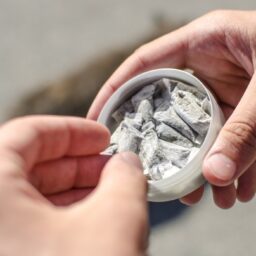Smokeless Tobacco
Three percent of American adults are smokeless tobacco users. They run the same risks of gum disease, heart disease, and addiction as cigarette users, but an even greater risk of oral cancer. Each year about 30,000 Americans are diagnosed with oral and pharyngeal cancers, and more than 8,000 people die of these diseases. Despite the…
Sinusitis: Special Considerations for Aging Patients
More than 20% of U.S. residents will be 65 or older in 2030. Of all Americans 65 and older, 14.1 percent report that they suffer from chronic sinusitis; for those 75 years and older, the rate declines to 13.5 percent. Geriatric Rhinitis Complaints Are For the most part, sinusitis symptoms, diagnosis, and treatment are the…
Treating a Sinus Headache
Sinus headaches are associated with a swelling of the membranes lining the sinuses (spaces adjacent to the nasal passages). Pain occurs in the affected region – the result of air, pus, and mucus being trapped within the obstructed sinuses. The discomfort often occurs under the eye and in the upper teeth (disguised as a headache…
Fungal Sinusitis
What Is A Fungus? Fungi are plant-like organisms that lack chlorophyll. Since they do not have chlorophyll, fungi must absorb food from dead organic matter. Fungi share with bacteria the important ability to break down complex organic substances of almost every type (cellulose) and are essential to the recycling of carbon and other elements in…
Are We Through With Chew Yet?

As many as 20 percent of high school boys and two percent of high school girls continue to use smokeless tobacco, according to the Centers for Disease Control and Prevention. Despite public education campaigns sponsored by medical societies, organized baseball, and individuals, 12 to 14 million American users, one third are under age 21, and…
Antihistamines, Decongestants, and “Cold” Remedies

Drugs for stuffy nose, sinus trouble, congestion and drainage, and the common cold constitute a large segment of the over-the-counter market for America’s medication industry. Even though they do not cure allergies, colds, or the flu, they provide welcome relief for at least some of the discomforts of seasonal allergies and upper respiratory infections. However,…
Antibiotics and Sinusitis
An antibiotic is a soluble substance derived from a mold or bacterium that inhibits the growth of other microorganisms. The first antibiotic was Penicillin, discovered by Alexander Fleming in 1929, but it was not until World War II that the effectiveness of antibiotics was acknowledged, and large-scale fermentation processes were developed for their production. Acute…
Your Genes and Hearing Loss

One of the most common birth defects is hearing loss or deafness (congenital), which can affect as many as three of every 1,000 babies born. Inherited genetic defects play an important role in congenital hearing loss, contributing to about 60 percent of deafness occurring in infants. Although exact data is not available, it is likely…
Travel Tips for the Hearing Impaired

Travel is an important aspect of our lives. Whether for business or vacation, traveling can be as stressful as it is enjoyable. And for more than 20 million people in the U.S. with hearing loss, travel can be especially difficult. What are common problems? What arrangements can be made? Many major airlines and transportation companies…
Pediatric Obesity and Ear, Nose, and Throat Disorders
Today in the United States, studies estimate that 34 percent of U.S. adults are overweight and an additional 31 percent (approximately 60 million) are obese. Combined, approximately 127 million Americans are overweight or obese. Some 42 years ago, 13 percent of Americans were obese, and in 1980 15 percent were considered obese. Alarmingly, the number…